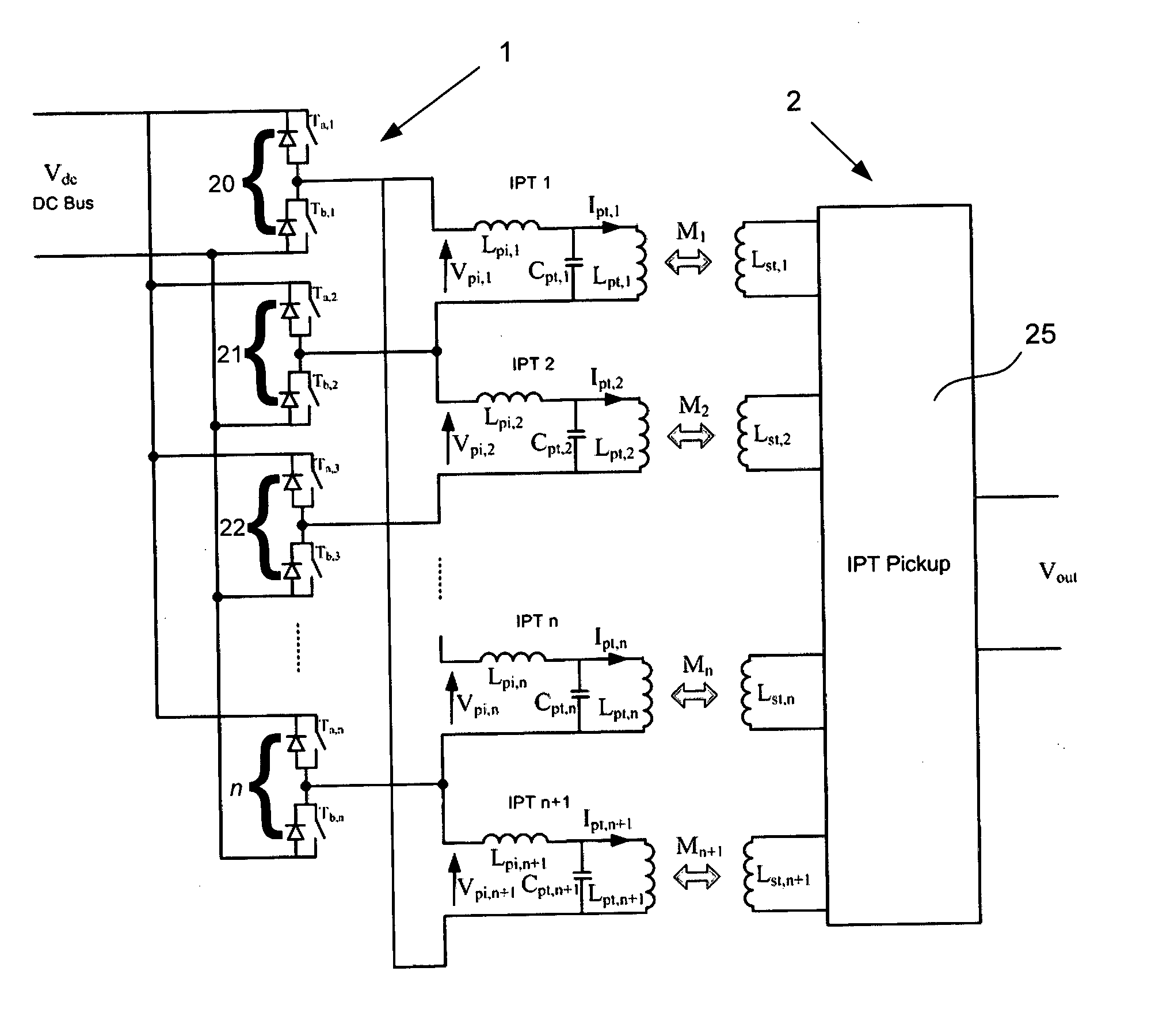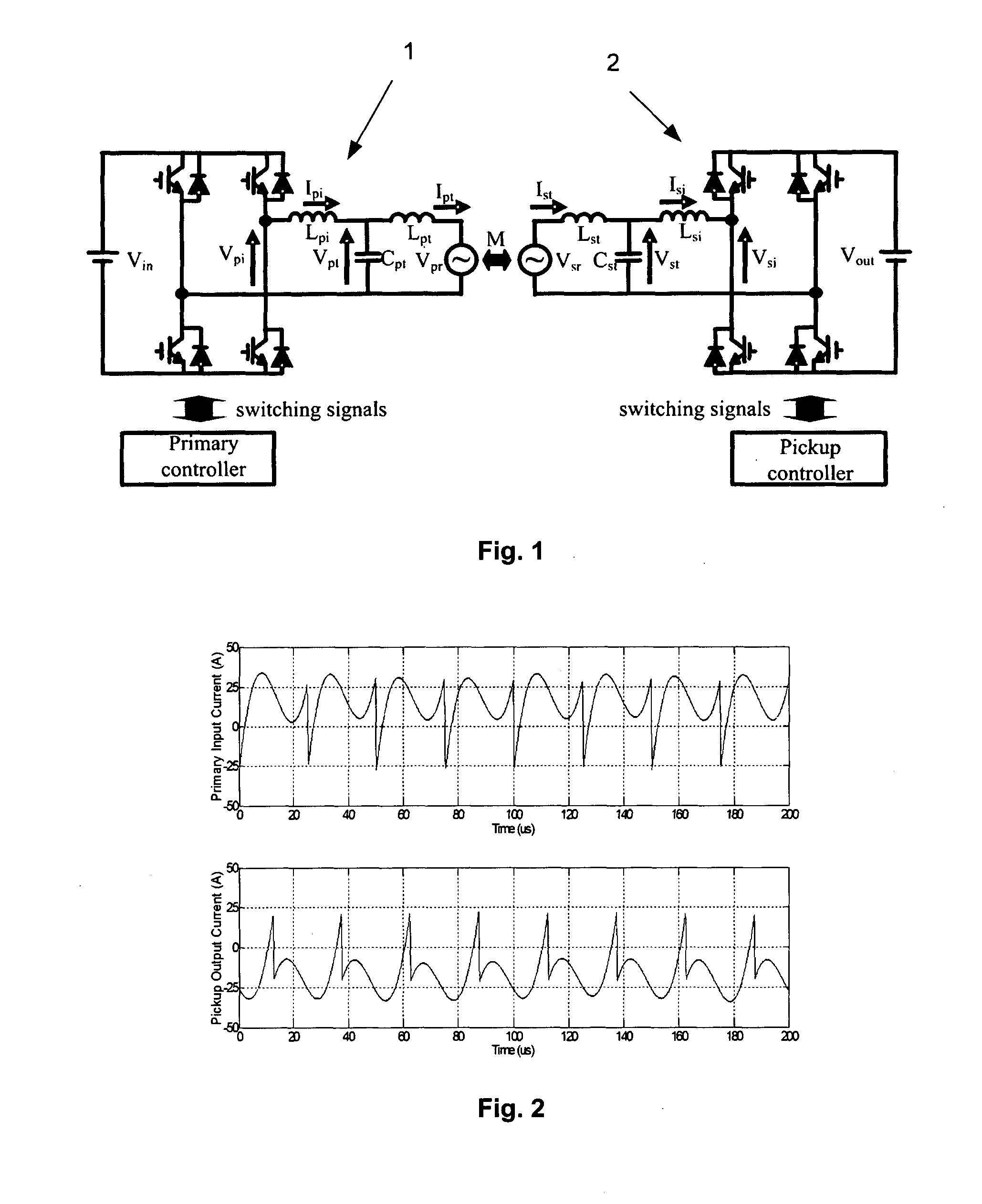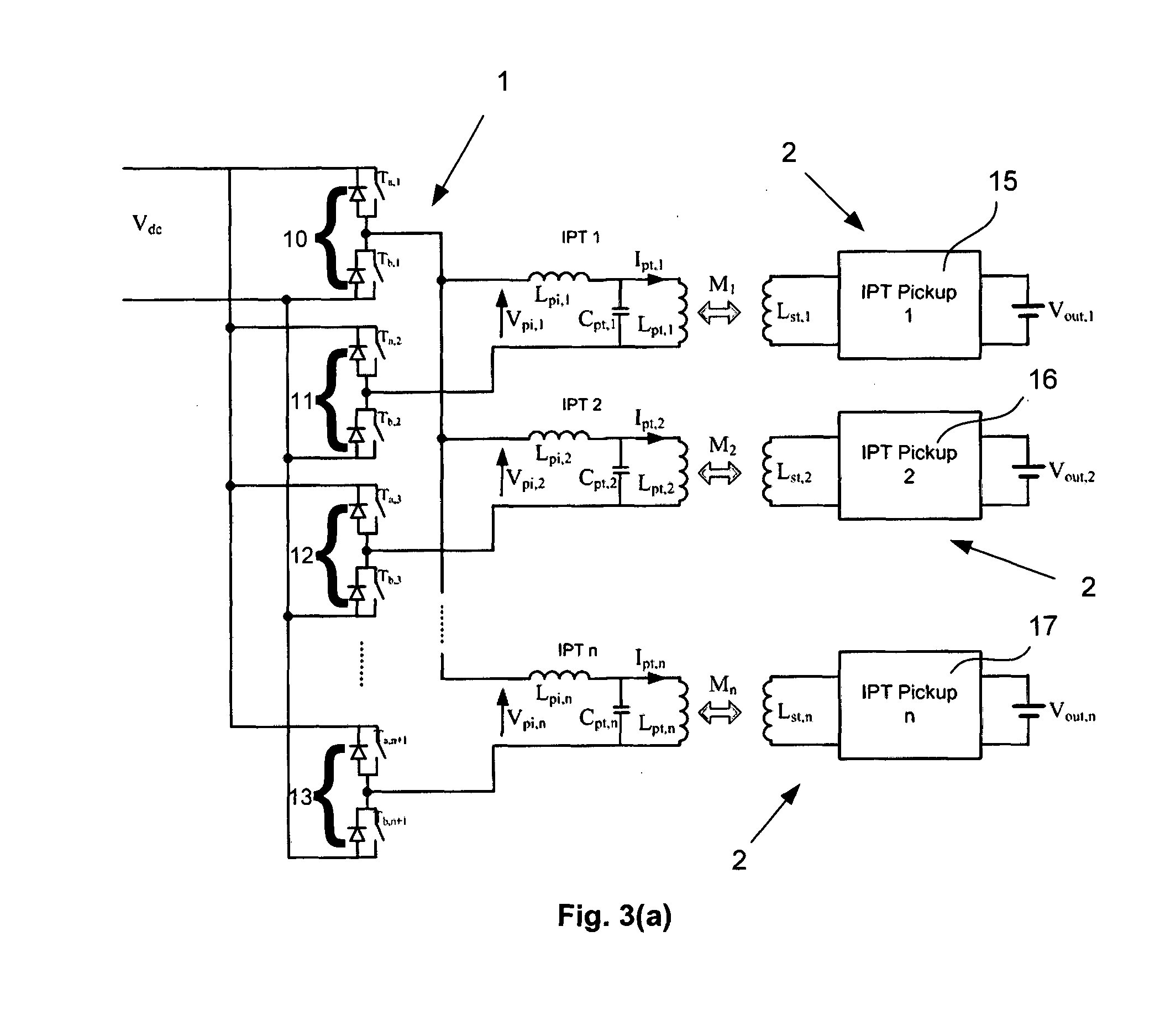Polyphase inductive power transfer system with individual control of phases
- Summary
- Abstract
- Description
- Claims
- Application Information
AI Technical Summary
Benefits of technology
Problems solved by technology
Method used
Image
Examples
first example
A System to Control Multiple IPT Primary Windings
[0103]As a first example, FIGS. 3(a) and 3(b) show IPT systems according to two similar embodiments of the present invention. The IPT system shown in FIG. 3(a) consists of a primary power supply made from n+1 switch pairs in the form of half-bridge legs (referenced 10, 11, 12 . . . n) and n primary windings (Lpt,1-Lpt,n) which are each compensated using LCL compensation networks (comprising inductors Lpi,1-Lpt,n, capacitors Cpt,1-Cpt,n, and the primary windings Lpt,1-Lpt,n). Each of these primary windings can be magnetically coupled with a single pick-up 2 each having a single pick-up winding (Lst,1-Lst,n). Each of the pick-up windings, in this example, is controlled by its own controller (15-17), which can either be a bi-directional or a uni-directional controller, and supplies power to its own load. For convenience, no specific load is shown. Instead, the load is represented by a DC supply (Vout,1-Vout,n). The first leg 10 of the pr...
second example
Polyphase Primary and Secondary
[0109]As a second example, a multiple winding primary may alternatively be coupled to a pick-up having multiple pick-up windings as shown in FIG. 4(a). FIG. 4(a) shows a system with multiple primary windings as described above with reference to FIG. 3(b). These are inductively coupled with a single pick-up having multiple pick-up windings (Lst,1-Lst,n+1), which are controlled by a single polyphase converter 25. Such a system may be used to charge a single vehicle such as a bus having multiple secondary or pick-up coils, for example. The present invention in such an application improves the power handling capacity of the IPT system, while minimizing losses. The n primary windings are powered using n half-bridge legs in the primary converter, which are operated in an interleaved fashion as described above with reference to FIG. 3(b). The pick-up converter 25 can be identical to the primary converter. Alternatively, the primary and / or pick-up converters m...
third example
Three-Phase Bi-Directional IPT System
[0112]As a third example, a mathematical analysis together with simulation results of a three-phase IPT system with a single three-phase pick-up are presented to show that both the magnitude and direction of power flow can simply be controlled through either relative phase or magnitude modulation of the voltages generated by the three-phase converters. The performance of the proposed three-phase IPT system is compared with a conventional single-phase IPT system, and results show that the present invention is superior in performance and is particularly attractive for contactless, bi-directional and rapid charging / discharging applications. Although the example referred to in the description below relates to a three-phase IPT system, those skilled in the art will appreciate that the invention is generally applicable to polyphase IPT systems, i.e. systems having more than three-phases. Also, the system may be configured and / or used as either a uni-di...
PUM
 Login to View More
Login to View More Abstract
Description
Claims
Application Information
 Login to View More
Login to View More - R&D
- Intellectual Property
- Life Sciences
- Materials
- Tech Scout
- Unparalleled Data Quality
- Higher Quality Content
- 60% Fewer Hallucinations
Browse by: Latest US Patents, China's latest patents, Technical Efficacy Thesaurus, Application Domain, Technology Topic, Popular Technical Reports.
© 2025 PatSnap. All rights reserved.Legal|Privacy policy|Modern Slavery Act Transparency Statement|Sitemap|About US| Contact US: help@patsnap.com



